The Northern Lights, or Aurora Borealis, are a celestial ballet of light dancing across the night sky, a spectacle of color and movement. As we approach the solar maximum, the period of greatest solar activity in the 11-year solar cycle, the chances of witnessing this natural wonder have significantly increased. This phenomenon is caused by the interaction of solar wind with the Earth’s magnetic field, resulting in mesmerizing displays that are best viewed from high-latitude regions known for their clear, dark skies.
Here are some of the prime locations to consider for your Northern Lights adventure in 2024:
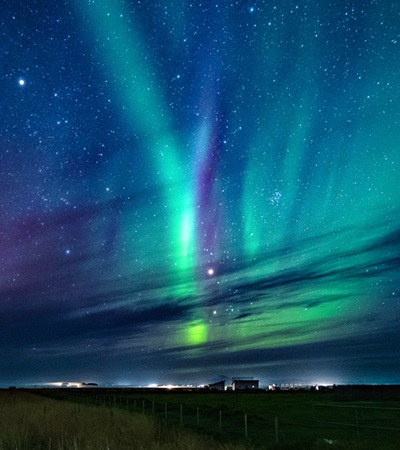
With its accessible landscapes and minimal light pollution, Southern Iceland offers a stunning backdrop for the Northern Lights. Places like Skógafoss waterfall, Jökulsárlón glacier lagoon, and Stokksnes black sand beach provide unique settings for the lights.
Image: Northern Lights In Iceland (Aurora Borealis)
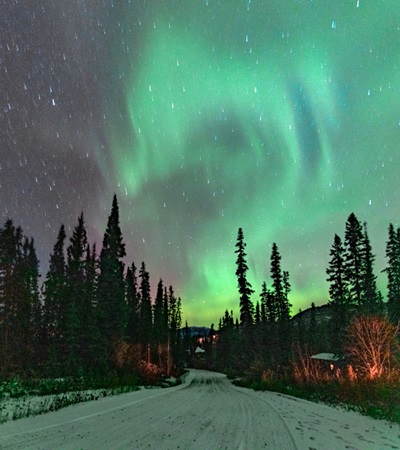
This region is known for its clear skies and offers a high probability of Aurora sightings. The vast wilderness here serves as a perfect canvas for the lights.
Image: Fantastic display of northern lights with stunning green & purple bands, swirls and spears. Taken in Yukon Territory, northern Canada.
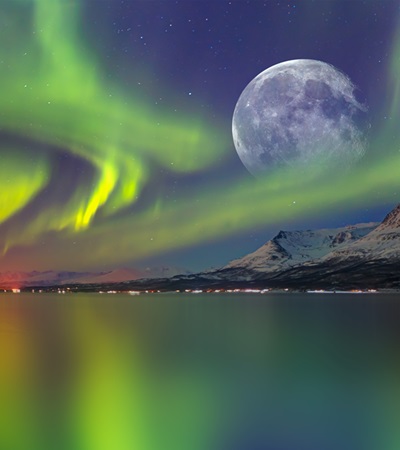
One of the northernmost cities in the world, Tromso provides a great balance of urban comforts and proximity to areas of darkness, ideal for viewing the Northern Lights.
Tromsø, often called the Paris of the North, is a vibrant city in northern Norway. It is known for its beautiful nature, rich culture and as one of the best places to see the Northern Lights. With attractions such as Fjellheisen Tromsø, a cable car that takes you to breathtaking views, and Polaria, an aquarium where you can meet the unique sea creatures of the Arctic, there is always something to do. Whether you are interested in history, want to experience Sami culture or simply enjoy the midnight sun, Tromsø has something for everyone.
Image: Northern lights (Aurora borealis) in the sky over Tromso with full Moon
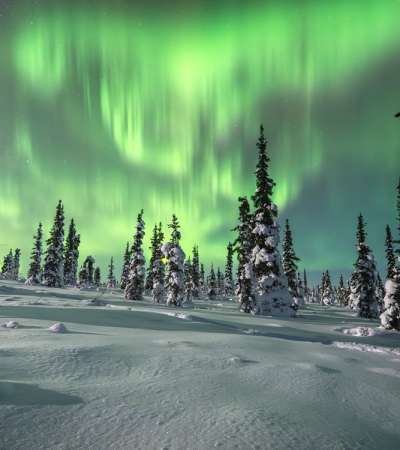
This was shot on a very cold night near Glacier View, Alaska. A beautiful display of aurora that I had all to myself. I did not see a single person where I was at the whole night. Very peacful.
Imgage: The city’s location under the “Auroral Oval” makes it one of the best places in the US to see the Northern Lights, with many tours available to take you to the best viewing spots.
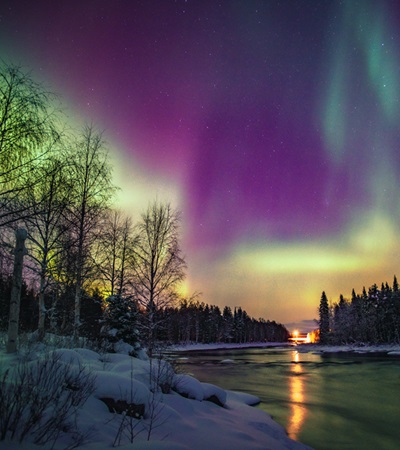
Known as the official hometown of Santa Claus, this magical place not only offers a festive atmosphere but also serves as a gateway to the Northern Lights.
Image: Aurora in Rovaniemi, Lapland Finland
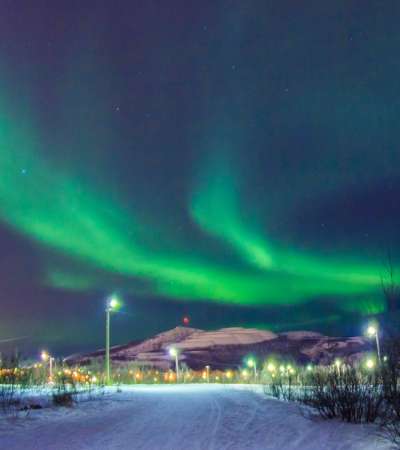
The Swedish Lapland provides a serene and snowy landscape, enhancing the experience of watching the Northern Lights dance above.
Image: Aurora Borealis in Kiruna
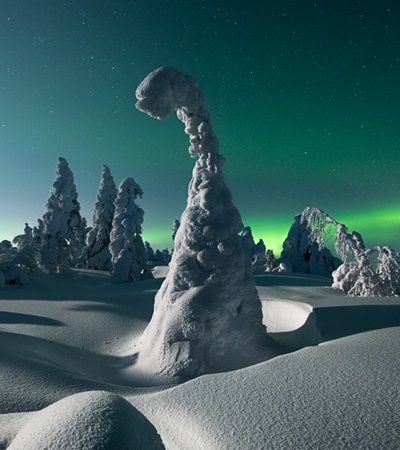
As the largest city within the Arctic Circle, Murmansk offers a unique urban setting to view the lights, with the added bonus of Russian cultural experiences.
Image: Winter night scenery, natural scenery of the Arctic region, popular travel destination.
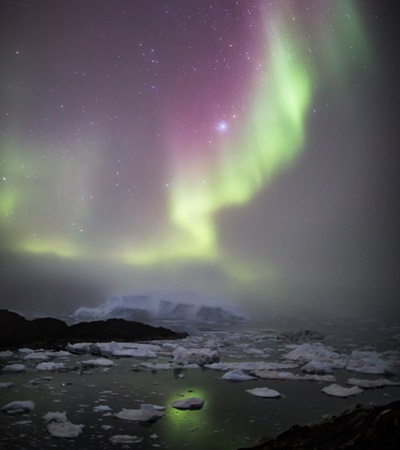
The ice fjords of Greenland offer a dramatic and icy panorama against which the Northern Lights seem even more otherworldly.
Image: Aurora Borealis over Ilulissat Icefjord in Greenland
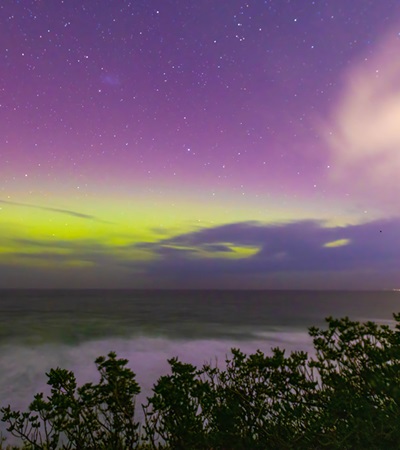
While the Northern Lights are typically associated with the northern hemisphere, Dunedin offers a chance to see the Southern Lights, or Aurora Australis, with equally stunning displays.
Image: Aurora Australis or southern lights in Dunedin, New Zealand; beautiful purple, pink and green lights, with colourful clouds, fog ocean, night sky and mountains in the background
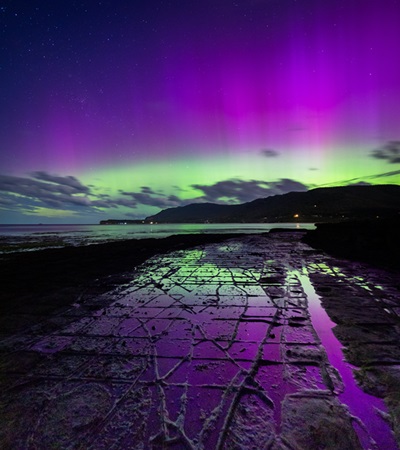
Similarly, Tasmania provides opportunities to witness the Southern Lights, especially during the winter months when the nights are longest.
Image: Aurora Australis – Tasmania – OLYMPUS DIGITAL CAMERA
The current solar activity suggests that the next few years will be particularly favorable for Northern Lights viewing. The sun’s approach to the solar maximum means that geomagnetic storms will be more frequent and intense, allowing the Northern Lights to be seen over a broader range of latitudes. This year, NASA reported one of the strongest aurora events in centuries, indicating that the solar maximum is indeed leading to extraordinary auroral displays.
For those planning to chase the Northern Lights, now is an opportune moment. The increased solar activity not only enhances the likelihood of witnessing the Aurora Borealis but also allows for the possibility of seeing them in locations where they are a rarer sight. Whether you’re a seasoned aurora hunter or a first-time viewer, the current conditions promise an unforgettable experience. Remember to dress warmly, be patient, and let the skies entertain you with one of nature’s most magnificent shows.
____________
The Northern Lights, or Aurora Borealis, are a mesmerizing natural phenomenon that has captivated humans for centuries. This stunning light show is not just a visual treat; it’s the result of a complex interplay between the Earth’s atmosphere and solar activity.
At the heart of this spectacle is the sun, which continuously emits a stream of charged particles known as the solar wind. This solar wind travels across the solar system, carrying with it electrons and protons that have been ejected from the sun’s atmosphere. When these charged particles reach the Earth, they encounter the planet’s magnetic field, which extends far into space and acts as a protective shield against cosmic radiation and these solar winds.
The Earth’s magnetic field is invisible but can be thought of as a huge bubble enveloping our planet. The magnetic poles, where the field lines converge, are the prime locations for observing the Northern Lights. As the charged particles from the sun interact with the edges of the Earth’s magnetic field, they are funneled down towards the poles. Here, they collide with gas molecules in the Earth’s atmosphere, such as nitrogen and oxygen.
These collisions excite the gas molecules, which means they gain energy and move to a higher-energy state. When the molecules return to their normal state, they release this energy in the form of light. This process is similar to what happens in a neon light. The color of the aurora depends on which gas is involved and how high in the atmosphere the collision occurs. Oxygen, for example, can give off green and red light, while nitrogen can produce blue or purple hues.
The patterns and shapes of the aurora are influenced by the Earth’s magnetic field lines. Charged particles spiral along these lines, creating the swirling and dancing lights that we see as the Northern Lights. The most common shape is the auroral arc, a stable, glowing band that can stretch across the sky. More dynamic and complex forms include curtains, rays, spirals, and coronas.
The intensity and frequency of auroral displays are linked to the 11-year solar cycle. During the solar maximum, the sun is more active, leading to more frequent and vivid displays of the Northern Lights. Conversely, during the solar minimum, the sun is less active, and auroral displays are less common and less intense.
The science behind the Northern Lights is a fascinating blend of solar physics, Earth science, and atmospheric chemistry. Understanding this celestial phenomenon not only provides insight into the workings of our planet and its relationship with the sun but also underscores the beauty and wonder of the natural world. The Northern Lights are a reminder of the dynamic and interconnected nature of the cosmos, a dance of particles and light that unfolds above us in the night sky.
____________________________
Predicting the Northern Lights: A Guide to Catching the Celestial Dance
The Northern Lights, a natural light display predominantly seen in high-latitude regions around the Arctic and Antarctic, are a bucket-list phenomenon for many. The ethereal glow of the aurora borealis is a result of collisions between electrically charged particles from the sun that enter the Earth’s atmosphere. These particles are blown towards the poles by the solar wind and are largely visible in the polar regions.
For those eager to witness this natural marvel, predicting when and where the Northern Lights will appear is crucial. Here’s a comprehensive guide to help you plan your auroral adventure:
### Understanding the KP Index
The KP index is a global geomagnetic storm index with a scale that ranges from 0 to 9. It is one of the most reliable tools for predicting the visibility of the Northern Lights. The higher the KP number, the more likely it is that the aurora will be visible at lower latitudes. For instance, a KP index of 3 might be sufficient for viewing in Iceland, but a KP index of 5 or higher is necessary to see the Northern Lights in England.
### Solar Cycles and Sunspots
The sun goes through an 11-year cycle of solar activity, known as the solar cycle. During the solar maximum, the sun emits more solar flares, leading to increased auroral activity. Conversely, during the solar minimum, the sun is less active, and auroral displays are less frequent and intense. Tracking sunspot numbers can provide insights into the current phase of the solar cycle and the likelihood of auroral displays.
### Geomagnetic Storms and Solar Winds
Coronal Mass Ejections (CMEs), also known as solar flares, are large ejections of plasma and magnetic field from the sun’s corona. When these reach Earth, they can cause geomagnetic storms, which significantly enhance the chances of witnessing the Northern Lights. Monitoring space weather forecasts can alert you to potential geomagnetic storms approaching.
### Real-Time Aurora Forecasting Tools
Several online tools and websites provide real-time data and forecasts for aurora activity. These include:
– The National Oceanic and Atmospheric Administration (NOAA) provides a 30-minute aurora forecast that is helpful for short-term planning.
– The University of Alaska’s Geophysical Institute offers detailed aurora forecasts for Alaska.
– The Icelandic Meteorology Office and the Norwegian Center for Space Weather provide forecasts for their respective regions.
### Local Weather Conditions
Even if all other conditions are favorable, local weather can make or break your chances of seeing the Northern Lights. Clear, dark skies are essential, so it’s important to check the local weather forecast for cloud cover and plan your viewing accordingly.
### Timing Your Viewing
The best time to view the Northern Lights is during the winter months when the nights are longest and the skies darkest. However, auroras can occur at any time of the year. The hours between 10 PM and 2 AM are typically the best time to watch for auroras.
### Location, Location, Location
Choosing the right location is key. Areas with little to no light pollution, away from city lights, will offer the best viewing experience. High-latitude regions such as Iceland, Norway, Canada’s Yukon, and Alaska are prime spots for aurora viewing.
By combining the KP index, solar cycle information, real-time aurora forecasts, and local weather conditions, you can increase your chances of successfully predicting and witnessing the Northern Lights. Remember, patience is key, as auroral activity can be unpredictable. With a little planning and some luck, you may just be rewarded with a glimpse of this breathtaking natural phenomenon. Happy aurora hunting!
________________________________
Packing for the Northern Lights: Essential Gear and Tips
Embarking on a journey to witness the Northern Lights is an adventure of a lifetime. To ensure a comfortable and memorable experience, it’s crucial to pack appropriately for the harsh and unpredictable conditions of the Arctic or Antarctic regions. Here’s a comprehensive packing list to help you prepare for your Northern Lights trip:
### Clothing for Extreme Cold
– **Thermal Base Layers**: Start with moisture-wicking thermal underwear to keep you dry and warm.
– **Insulating Mid-Layers**: Add fleece or woolen sweaters and trousers for insulation.
– **Waterproof Outer Layers**: Protect yourself from wind and moisture with a waterproof jacket and trousers.
– **Down Jacket**: For extra warmth, a down-filled jacket is indispensable.
– **Beanie, Scarf, and Gloves**: Don’t forget a woolen hat, a scarf, and insulated gloves or mittens to protect extremities.
– **Thermal Socks**: Pack several pairs of thick, warm socks to keep your feet toasty.
– **Sturdy Footwear**: Waterproof, insulated boots are a must for trekking through snow.
### Photography Gear
– **Camera**: A DSLR or mirrorless camera with manual settings will give you the best chance to capture the aurora.
– **Wide-Angle Lens**: A lens with a wide aperture (f/2.8 or lower) is ideal for astrophotography.
– **Tripod**: A sturdy tripod is essential for long-exposure shots.
– **Extra Batteries**: Cold weather drains batteries quickly, so bring spares.
– **Memory Cards**: Have enough memory cards to store all your photos.
– **Lens Heater**: To prevent lens fogging, consider a lens heater or hand warmers.
### Safety and Comfort Items
– **Headlamp**: Choose one with a red-light setting to preserve night vision.
– **Hand and Foot Warmers**: These can be lifesavers during long nights outside.
– **Thermal Flask**: Keep a hot drink handy to warm up from the inside out.
– **Snacks**: High-energy, non-perishable snacks will keep your energy levels up.
### Navigation and Communication Items
– **GPS Device**: In remote areas, a GPS can be crucial for navigation.
– **Satellite Phone**: For safety, consider carrying a satellite phone in case of emergency.
– **Local SIM Card**: If you’re traveling internationally, a local SIM card can be useful for communication.
### Miscellaneous Items
– **Backpack**: A comfortable, waterproof backpack will protect your gear.
– **First Aid Kit**: Always carry a basic first aid kit for minor injuries.
– **Travel Insurance Documents**: Ensure you have coverage for extreme sports or activities.
– **Aurora Forecast Apps**: Download apps or bookmark websites that provide real-time aurora forecasts.
Remember, the key to enjoying the Northern Lights is staying warm, dry, and safe. By packing the right gear, you can focus on the awe-inspiring beauty of the aurora borealis without the distraction of discomfort. Safe travels and clear skies!
Post expires at 10:47pm on Saturday October 26th, 2024
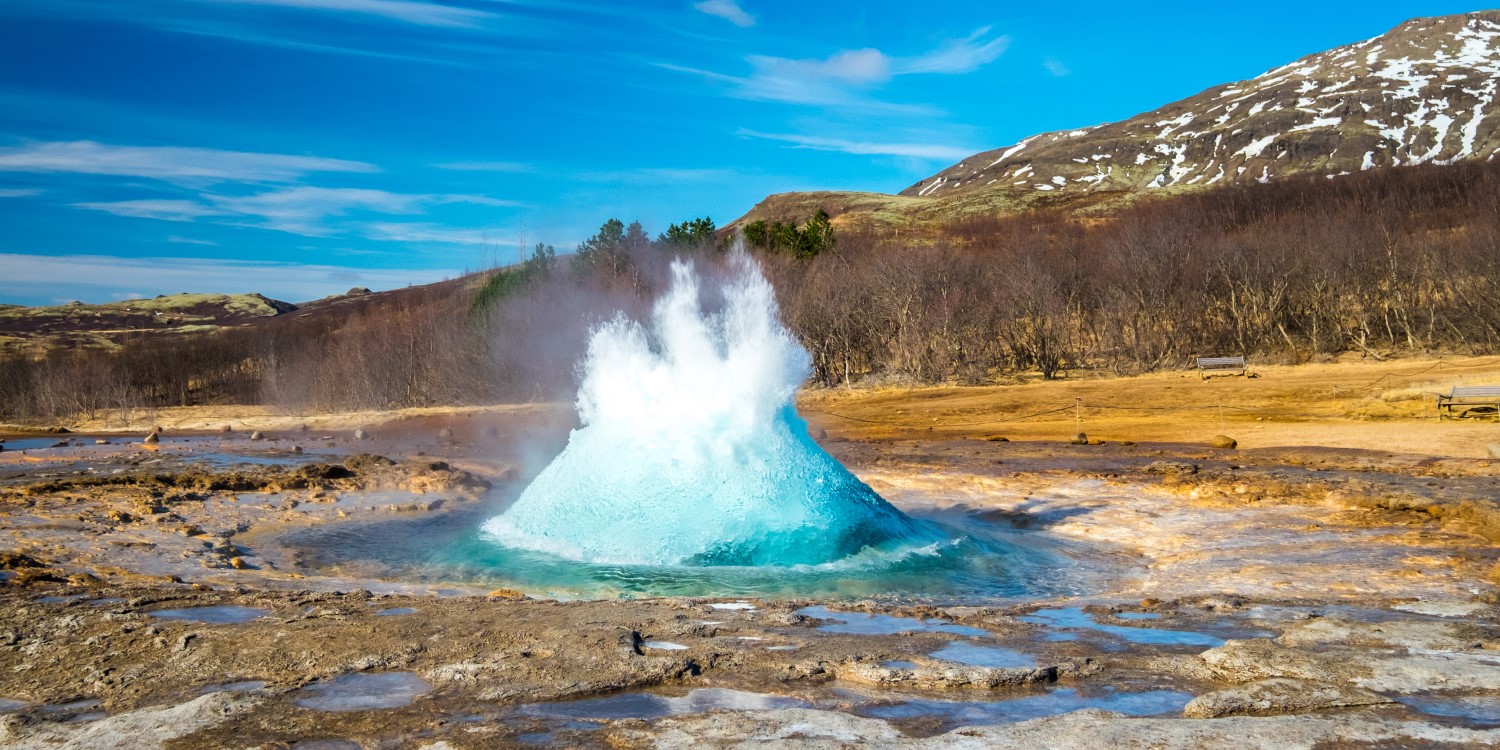
8 days from € 2 490
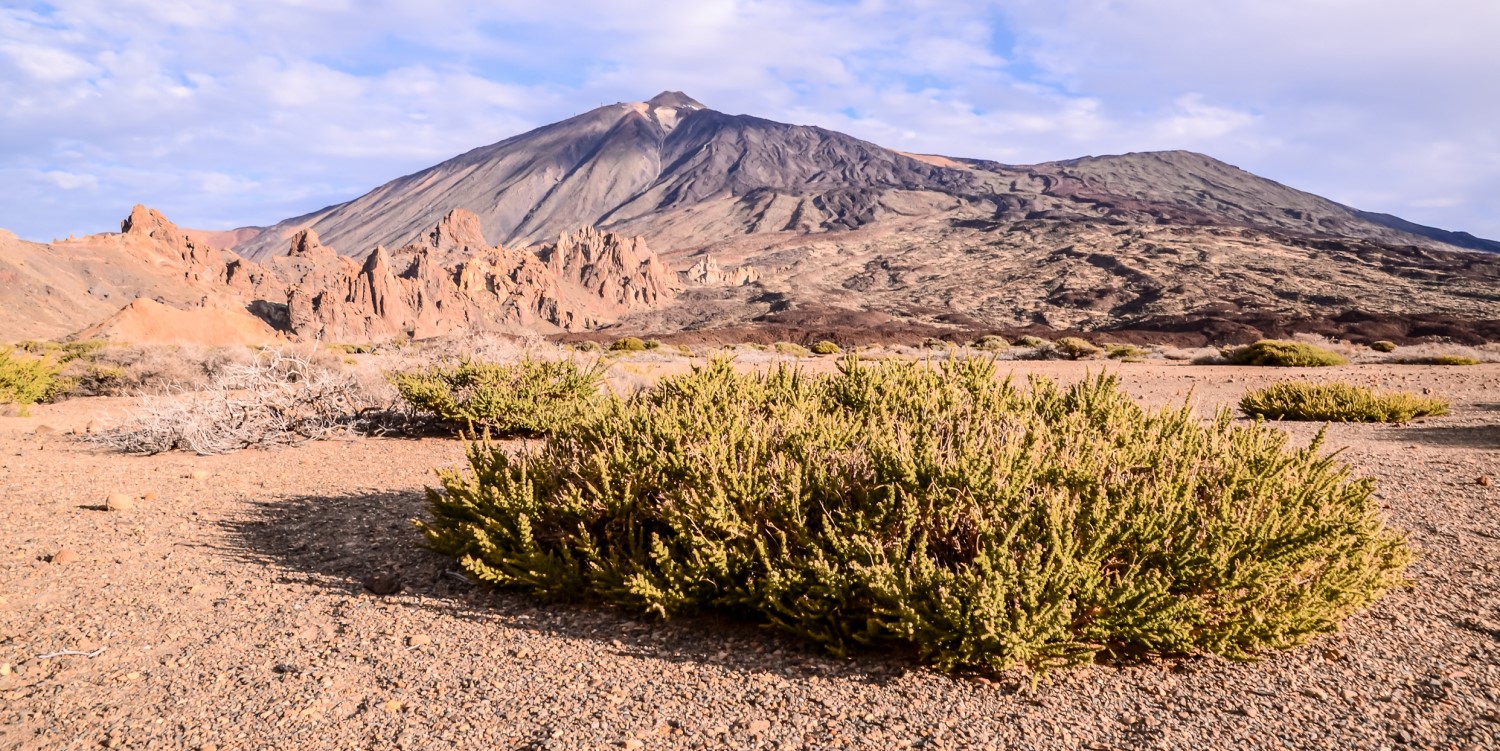
9 days from € 1 200
3 replies on “10 best cities to see the Northern Light (Aurora Borealis)”
Enjoy premium luxury transportation in San Francisco with our airport car service. Whether you need a limo ride or chauffeur, our affordable options guarantee comfort and elegance. Choose the finest limousine service in San Francisco for a remarkable journey.
For the best San Francisco Airport Transportation, trust our SFO Limo Car Transfer Service. We provide luxurious SFO Car Service, dependable SFO Limo Transfer Service, and swift Airprot Transfer SFO for a hassle-free journey.